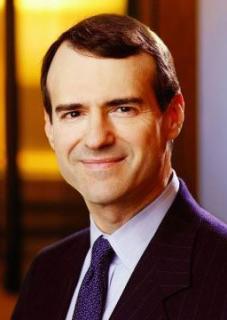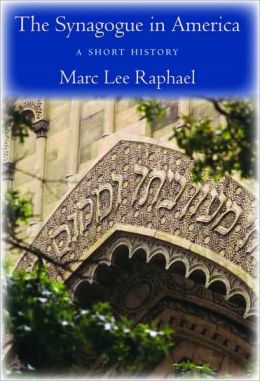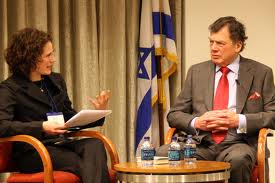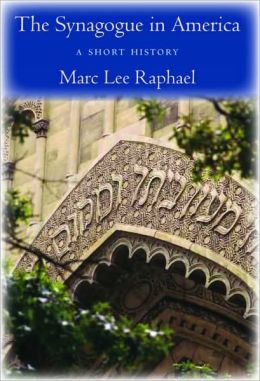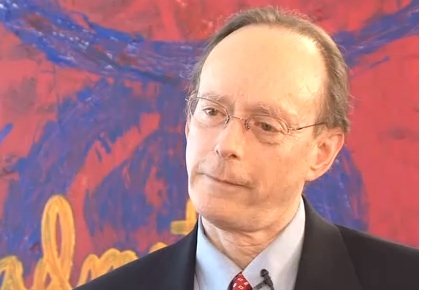This gallery contains 0 photos.
For myself, prayer and spirituality are not the primary way I connect with Judaism....Category Archives: Jews
Rabbi Avi Weiss on preferring the term “encounter” to “outreach”
This gallery contains 0 photos.
Weiss has a true sense of the Jewish people as a family and feels...Rabbi Avi Weiss is committed to Orthodox Judaism, but his goal is to serve all of the Jewish people
This gallery contains 0 photos.
While he is committed to Orthodox Judaism, he clearly states that his goal is...Considering the failure of acknowledging Patrilineal Descent for the Reform Movement
In 1983, the Reform Movement made the decision to grant any child born of a Jewish father automatic membership in the Jewish People, a policy otherwise known as patrilineal descent. Indeed, the decision of the Central Conference of American Rabbis was truly radical: it “transformed the halachic formulation of ‘the child of a Jewish mother’ to the ‘chile of a Jewish parent’” in delineating the transmission of Jewishness from one generation to the next; moreover, it stipulated that no child, whether born of a Jewish father or mother, was officially Jewish until he/she complete a bar/bat mitzvah or engaged in public acts or ceremonies of Jewishness. The impact was immediate: conversions to Judaism dropped by 75%. Following the patrilineal descent decision, only 5% of non-Jewish fiancé(e)s in prospective intermarriages converted to Judaism. The ancient Jewish club now had some members who did not recognize other club member, creating confusion. Worse still, the overwhelming majority of those granted this new club membership threw away their membership cards. As a result, membership in the Jewish club has been profoundly devalued.
Though the Reform Movement instituted patrilineal descent as a means to combat the problem of poor Jewish identity among children of intermarriage, the result has been the exact opposite. Among the 30% of mixed marriages who are raised as Jews, the vast majority had Jewish mothers. Even when the Jewish parent desires to raise the children as Jews, this is only likely to happen when the Jewish parent is a woman. This may seem surprising since the child of a Jewish father most often carries the father’s name and is frequently assumed to be Jewish by acquaintances. Nevertheless, the factual evidence is clear: whether by virtue of genes, tradition or culture, Jewish mothers are much more effective at transmitting Judaism to their children than Jewish fathers even if they so desire.
Scott A. Shay, Getting Our Groove Back: How to Energize American Jewry, 2nd ed. (Jerusalem & New York: Devora Publishing, 2008), 155.
Zionism was a matter that Orthodox rabbis sermonized in the 1920s and 1930s
This gallery contains 0 photos.
In one area especially, Judaic beliefs and contemporary events intersected—Zionism. Nearly every Orthodox rabbi...A Pragmatic Reason for Jewish Federations to Reach Out to Intermarried Couples
This gallery contains 0 photos.
Olitzky told me that many in the organized Jewish community are beginning to recognize...“Orthodox rabbis rarely made any comments on the events unfolding on the American scene in the 1920s or early 1930s”
…Orthodox rabbis rarely made any comments on the events unfolding on the American scene in the 1920s or early 1930s. They generally ignored race, immigration, pacifism, isolationism, the League of Nations, lynching, Sacco and Vanzetti, civil liberties, the Klan, racial segregation, industrial (textile, railroad) strikes, Einstein’s theory of relativity, modern technology, modern war, Prohibition, economic warfare, Bolshevism, political events in Europe, and the Depression. Only with the rise of the Nazis and the 1939 White Paper that drastically curtailed Jewish immigration to Palestine, did European events become part of their sermons. Instead, they talked about Torah (which, all Orthodox rabbis agreed, God had revealed verbally to Moses at Mt. Sinai), commandments (“word of God,” they all agreed), ceremonies, customs, observances, rituals, holidays, festivals, and themes associated with the calendrical events in the Jewish/Judaic year. The scientific and philosophical literature of their day was useful primarily to support the conclusions of Judaic values and beliefs.
Marc Lee Raphael, The Synagogue in America: A Short History (New York & London: New York University Press, 2011), 90.
Gary Rosenblatt Considers Rabbi Rick Jacobs Statements about Intermarriage
Consider this excerpt from the major address given by Rabbi Rick Jacobs, president of the Union for Reform Judaism, at last month’s biennial of the Reform movement in San Diego.
“Incredibly enough … I still hear Jewish leaders talk about intermarriage as if it were a disease,” he told some 5,000 constituents. “It is not. It is a result of the open society that no one here wants to close. The sociology is clear enough; anti-Semitism is down; Jews feel welcome; we mix easily with others; Jewish North Americans (researchers say) are more admired overall than any other religious group. So of course you get high intermarriage rates — the norm, incidentally, in the third or fourth generation of other ethnic groups as well.
“In North America today, being ‘against’ intermarriage is like being ‘against’ gravity; you can say it all you want, but it’s a fact of life. And what would you prefer? More anti-Semitism? That people did not feel as comfortable with us?
“In any event, we practice outreach because it is good for the Jewish people. Interfaith couples can raise phenomenally committed Jewish families, especially when they do it in the Jewish community that is offered uniquely by the Reform movement.”
It’s true, as Rabbi Jacobs suggests, that interfaith couples can raise deeply committed Jews. I admire him and his work, and I hope his movement is successful in its ambitious plans to make that happen. But the jury is definitely out, with demographic experts debating whether the glass is half full or half empty, based on the findings of the recent Pew Research Center study on Jewish identity. The optimists acknowledge that while it is far more likely that children of intermarriage say they have no religion, 59 percent of that cohort who are adults under 30 say they are Jewish, a significant increase in recent years. “In this sense, intermarriage may be transmitting Jewish identity to a growing number of Americans,” write Pew researchers Greg Smith and Alan Cooperman.
Others say that only a small percentage of adult children of intermarriage marry Jews, and that based on projections of current data, less than 10 percent of them will in turn raise their children as Jews. Sociologist Steven M. Cohen cites the remark of the late American Jewish Committee sociologist Milton Himmelfarb when asked what to call the grandchildren of intermarried Jews. “Christian,” he said. (Cohen adds: “He was approximately 92 percent correct.)
Commenting on Rabbi Jacobs’ biennial remarks, Cohen said he thought it “irresponsible” for the Reform leader not to promote Jews marrying Jews. “Isn’t it an inherent obligation” for him to do so? he asked. And just because it may be going against the popular grain, “does that mean rabbis shouldn’t encourage Shabbat observance, keeping kosher, etc.?”
Gary Rosenblatt, “‘Being Against Intermarriage is Like Being Against Gravity'”, The Jewish Week (17 January 2014), 7.
“Jews who intermarry also have difficulty understanding their friends’ and relatives’ consternation at their decision…”
The current consensus in America is that people can fall in love across race, ethnic group, and creed and that nothing should stand in their way. As a result, Jews are justly sensitive to the charge that discouraging intermarriage is a form of bigotry, since, for many non-Jews, Jewish aversion to intermarriage is problematic. How can Jews claim to be tolerant and then be unwilling to allow their child to marry a non-Jew? Jews who intermarry also have difficulty understanding their friends’ and relatives’ consternation at their decision, a decision which they perceive as a testament to their openness to different cultures. This view of Jewish intermarriage must change.
Jewish inmarriage is not a form of bigotry.
Scott A. Shay, Getting Our Groove Back: How to Energize American Jewry, 2nd ed. (Jerusalem & New York: Devora Publishing, 2008), 146
“The content of American-educated Orthodox rabbis’ English-language sermons was dramatically different from that of the (mostly) Yiddish-language sermons of an earlier generation”
…the content of American-educated Orthodox rabbis’ English-language sermons was dramatically different from that of the (mostly) Yiddish-language sermons of an earlier generation. This was particularly true between the World Wars in New York City, where Leo Jung on the West Side and Joseph Lookstein on the East Side—self-proclaimed ‘modern Orthodox” rabbis—drew upon the works of Carlyle, Dickens, Freud, Goethe, Ibsen, William James, Macaulay, Shaw, Tennyson, and Whitman, as well as on the vast body of rabbinic literature, to craft sermons much like those of American-born Reform and Conservative colleagues. Keeping in mind the warning of a contemporary Conservative rabbi, Israel Herbert Levinthal, that his printed sermons were often delivered ‘extemporaneously” and written “out a long time after their delivery,” the historian looks for typescript sermons or sermons reprinted in synagogue bulletins and the Jewish press immediately after delivery. They are abundant, and, by the 1930s, Orthodox rabbis in various places turned a Latin phrase, digested a German book on philosophy or literature, or followed the scientific arguments of the leading writers of their time as easily as they could quote from the Talmud.
Marc Lee Raphael, The Synagogue in America: A Short History (New York & London: New York University Press, 2011), 89-90.
